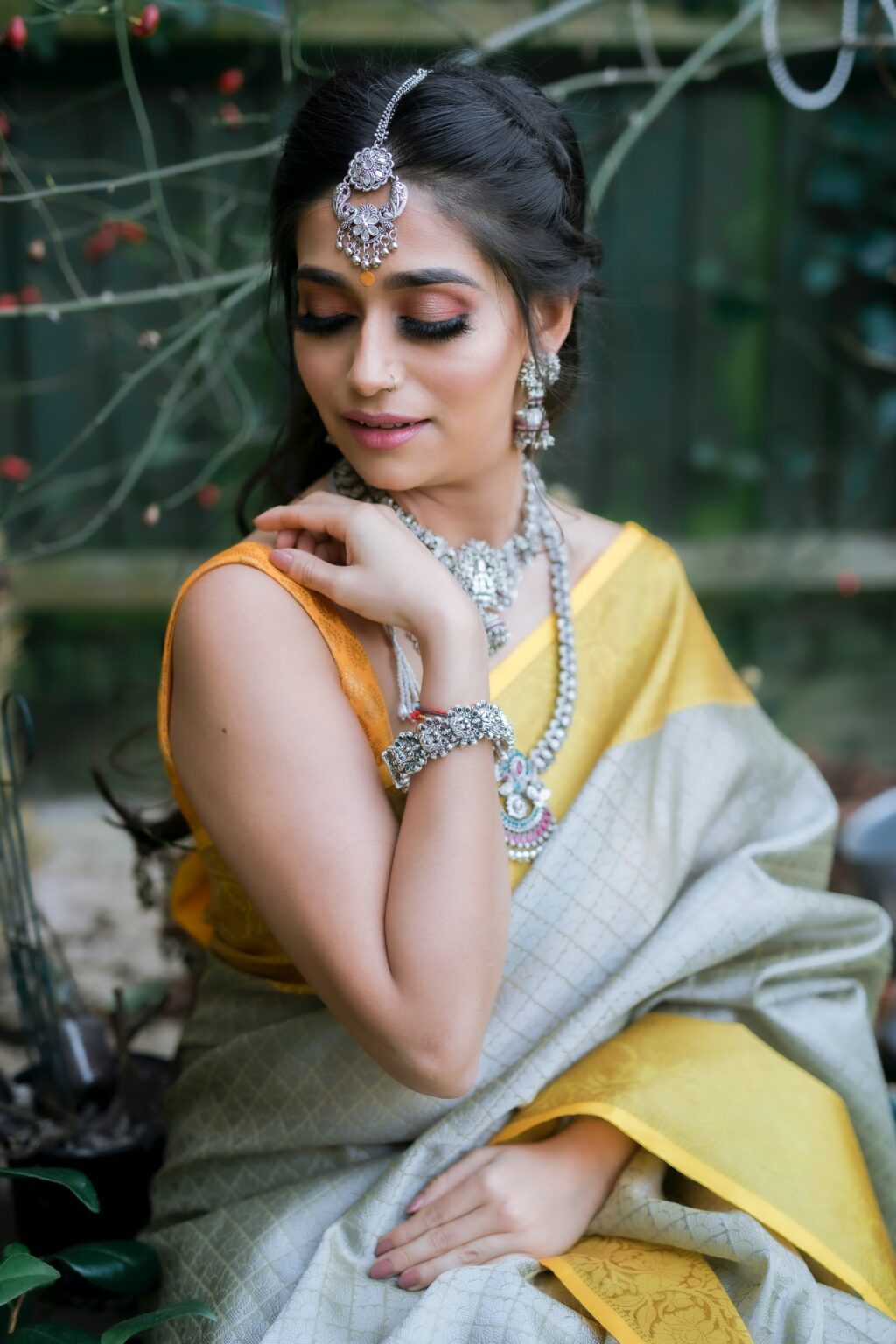The Best Ways To Drape Sarees Perfectly
The classic but trendy nine-yard sari is the best clothing for a range of occasions and gatherings. A sarees elegance, charm, and grace are enticing when draped appropriately.
Any young lady’s mother, without a doubt, is the finest instructor for teaching her how to drape a saree tastefully. But what if you live alone or in a rural area and need a saree draping solution? We’re here to help you figure out the best technique to drape a saree correctly.

You may begin draping the saree once you’ve placed it on your blouse and petticoat. Keep the sarees essentials on hand now, such as accessories, pins, and high heels, since these are necessary for proper sari attire.
Stuck your saree into your petticoat, which you may alter to your preference. Tie a knot on the plain end of the saree and tuck it inside the petticoat. When tying the knot, make sure the embroidered work on the sarees is in front of you.
Swaddle the sarees on the left side of your body until you get back to where you started. Just make sure you swaddle your sari for at least one full round. Please make sure the bottom end of your sari is a bit higher than the floor once you’ve completed wrapping it.
You’ll have some excess fabric left over after that, which you’ll need to construct pleats with. While forming the pleats, use your thumb and middle finger to produce perfect pleats.
Make 5 to 7 pleats, depending on the fabric of your saree, to give it a unique look. Fold the pleats within the petticoat after they’ve been formed. The saree is attached with safety pins, especially on the left side of the waist. When you secure the sari with pins, it will remain entirely intact and allow you to carry it easily.
The only thing left to do now is style the pallu. Before styling the sari, you must first lay the pallu over your left shoulder. Alternatively, you can open one or two pleats to make your pallu as long as you want it to be, or even to your knees.
Replace the safety pins and reattach your pallu. Furthermore, when it comes to pallu style, you have two options: keep it pleated or let it flow freely. Both pallu styles are just amazing in order to carry off the appearance. If you prefer a flowing pallu, simply drape it over your left shoulder and hold it at the forearm; the option is completely yours.
You must pleat the pallu vertically if you want to make a pleated pallu. First and foremost, you must pleat roughly 7 to 8 times, depending on the breadth of your sari. Second, use safety pins to secure the pallu to the inside of your shirt. Finally, you’re ready in your conventional and classic sari style, and you may glam it up with a stunning brooch, especially if you’ve made sari pleats.

There are some saree facts that might be beneficial to someone who is new to the world of traditional clothing. This provides details on various sarees, blouses, draping, styling, and accessories. With such helpful suggestions and methods at their fingertips, women would find it quite easy to delve into the thrilling world of sari shopping to discover the suitable outfit/s for various occasions.
One of the most appealing features of this stunning ensemble is the variety of designs and colors available. Although all saris are fundamentally the same, the details that affect the overall aesthetic of the garment may differ. To comprehend the many sorts of sarees, it is necessary to first comprehend the garment itself. It’s merely a long strip of fabric wrapped around the waist and draped across the torso in a certain pattern. To give the sari more structure and modesty, it is worn with a blouse and long skirt (known as the petticoat).
Sorting through details on the numerous kinds of the Indian saree might take a long time. For someone who has little or no expertise in an ethnic design, there are so many options that it might be intimidating. Fabric possibilities include soft cotton and linen, close-fitting georgette and diaphanous chiffon, delicate net and tissue, as well as weaved silk and brocade from various parts of India.